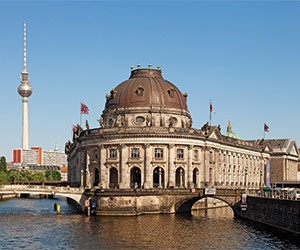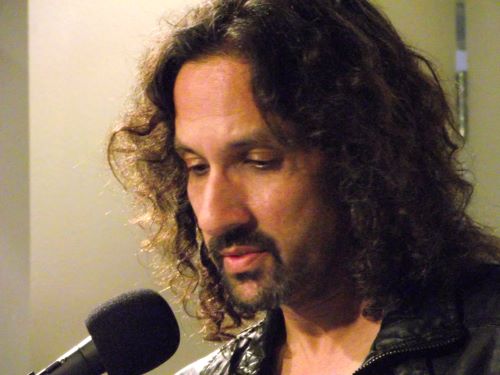In Dusseldorf the mayor did cartwheels. Literally.
During our visit, Meetings Today descended upon the compound of Thomas Geisel, Lord Mayor of Dusseldorf, and right there inside City Hall he did a cartwheel because they play a significant role in Dusseldorf history. In 1288, the bloody Battle of Worringen gave Dusseldorf official city status, and following the victory legend has it the townsfolk did cartwheels en masse. Today, the cartwheel remains an iconic symbol of the city. One can find various sculptures and graphics all around town.
Dusseldorf is currently the main hub for Air Berlin, with 41 direct flights per week to San Francisco, Los Angeles, Chicago, Miami, New York and Boston. A partner of Etihad Airlines, Air Berlin features similar business class cabins, with three flight attendants catering to only 19 passengers--quite a favorable ratio, we thought. Options include honeymoon seats, where two passengers traveling together could sit next to each other, while other seats remained isolated from the rest, staggered in their own personal space. Every single seat offered direct aisle access, with no one needing to stumble over anyone else. Every seat fully reclined to a horizontal position.
These days, most airlines funnel long-haul groups through Frankfurt or Munich, but Dusseldorf Airport, Germany’s third-largest, provides quite an attractive alternative. Approximately 70 different airlines use the airport, taking 22.5 million passengers to 200 destinations in 55 countries yearly.
With a single terminal measuring less than 1,500 feet and three piers of gates about a seven-minute walk from each other, the facility doesn’t even feel like a large airport. Transfers seem smooth and effortless. Natural light floods the terminal from above, providing a wide-open, airy feeling. Plus, only a 15-minute drive separates the airport from the city center. Practically next door, one finds the main train station with massive group spaces and views of the runways. Occasional rabbits and foxes even make their way onto the tarmac from the nearby forestry.
Since the past, present and future of Dusseldorf are inseparable from beer, groups will eventually find their way to Uerige for a tour of the city’s definitive brewery, located at a main cobblestone intersection of Altstadt, the old town area.
Aside from being one of 100 drinking establishments in the same labyrinthian neighborhood of crooked pathways, all of which are a few blocks from the Rhine River, Ueirge offered multiple spaces for groups of 60 or even 300 if need be, both inside and spilling out onto the streets. Old-world rustic brewery charm enveloped us. Group tours for at least 10 people were regularly accommodated and we inspected every component of the brewing process; the maturation cellar, walk-in freezer spaces, ancient copper tanks and a maze of other rooms throughout the historic multistory complex.
As an epicenter of international meetings and group business, Dusseldorf is home to more than 70 consulates and foreign funding organizations for business tourism. Many Japanese companies also place their headquarters in Dusseldorf.
Since the city soaks in Baroque art history and European royal dynasties, the Derag Livinghotel De Medici seemed to fuse all of these components into a regal symbiosis during our stay. A former monastery and veritable palace-museum where renowned private art collections dating back centuries beckon guests down the hallways and exhibits of antiquarian walking sticks sit behind museum-style glass cases, the property caters to short, medium or long sojourns. Plenty of meeting spaces revealed themselves amid sculptures, tapestries, marble altars and cross-vaulted passageways, and at the front desk there was even a $40 catalog of the hotel’s art collection.
In the end, we saw plenty of reasons to do cartwheels in Dusseldorf. And we’re still spinning.




